David McFall R.A. (1919 - 1988)
Sculptor
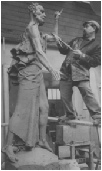
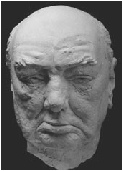
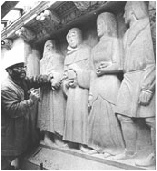
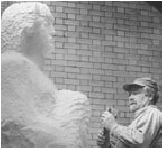

1944/4 The Laughing Woman
Bust Bronze
The sitter was Elsbeth Ruth Juda (née Goldstein), painter, photographer and collagist, who
photographed Winston Churchill for Graham Sutherland.
The painter and collagist, Elsbeth Juda, moved from Germany to London in 1933 with her husband
Hans. Hans Juda had been financial editor of the Berliner Tageblatt and, on moving to London,
become publisher and editor of the magazine, The Ambassador. Elsbeth studied photography under
Lucia Maholy and went on to be a full-time fashion and advertising photographer, known under the
name 'Jay'. She eventually joined her husband as associate editor and photographer on The
Ambassador, and in 1963 she set up a design studio to teach industrial practice to arts graduates.
Hans and Elsbeth Juda built up a distinguished collection of contemporary art and became close
friends with many of the artists they collected. The following quotes are taken from The National Sound Archive National Life Story Collection Issue 6, Summer 2001 in which she recalls how Sigmund Freud saved her life and how she and Hans were twice involved in almost saving Graham Sutherland's portrait of Winston Churchill for posterity:
"I was born on the 2nd of May 1911 in Darmstadt, and my father was Professor of Philosophy at the university. I was the second child. Freud came one day to visit my father and he said, 'Freud, as you are also a doctor of medicine, could you bear to go and see my screaming second child? We've pushed her behind the double doors and we can still hear her.' (Our own doctor was in love with my mother and he said the baby was just a naughty baby.) And so he went and he said, 'What do you feed her on?' and my father said, 'My wife, of course.' And Freud said, 'Have you had her milk examined?'. My father said, 'How dare you. Look at my son. Same mother, same milk.' Freud said, 'You'd better give her a wet nurse very quickly and put her in the sun because the vitamin E of the sun might just about save her.' So Freud saved my life. I had been starving. My mother's milk was water. And of course, I was screaming, but our own doctor had said, 'She's fine. There's nothing wrong with her.' But as you can see, I've made it to a ripe old age."
The Graham Sutherland portrait was not so lucky:
"The Churchill portrait was for his eightieth birthday, and Sutherland was working away and showed Churchill only ever one oil sketch which was Churchill in his garter robes (which went straight to the Beaverbrook Museum in New Brunswick, Canada). And so Churchill obviously thought he was going to be painted in his garter robes [but] he wore his zoot suit for the sittings and never saw anything while Graham was working on the portrait, which made him a little irritable. And Sutherland had miserable sittings because Churchill had had a stroke and also drank heavily at lunch. Finally, during the session, Sutherland would say, 'A little more of the old lion, sir' and he'd sit up and then flop after a minute. And so Graham was desperate."
"The week before it was finished, Graham said, 'Elsbeth, could you spare the time to come down to Westerham (where Churchill was living) and do a few photographs for me because he's simply folding up every time.' I was happy to do that. I went and took a whole set of photographs, which are now at the National Portrait Gallery, which are exactly like the portrait - the hand with the cigar, everything. And Churchill was enchanting, being photographed."
"Anyway, the painting was done, and Graham took the risk-limiting step and asked Kenneth Clark, who was a great admirer of Sutherland, to look at the painting. K. Clark went to the White House with Lady Churchill and pronounced it a masterpiece, so all was set and fine. Well, [at the public unveiling] when Churchill pulled the velvet cord and saw himself in his zoot suit, slumped, with his feet cut off, he freaked out. He never referred to it again. And Graham rang up later that afternoon and said, 'Oh Hansie, I can't bear it. He's not having it. He doesn't want it. He hates it. What am I going to do? I can't afford to spend all..' Hans said, 'Just calm down, Graham. Send it to us.' And so it was delivered and we had it in our studio living room and it looked very nice on an easel. And we photographed it. We were going to pay Sutherland the going rate."
"Three days later, another phone call [from Sutherland]. 'I'm not allowed to give it to you, it's got to go back to Hyde Park Gardens [Churchill's London home]. So we delivered it back. And that's where she [Lady Churchill] burnt it. He was so distressed, having it in the house, so she took it down, chopped it up and put it in the boiler."
"Anyway, twenty years later, fifteen years later, the Sunday Times rings. They said, 'Elsbeth, you've got these Churchill photographs, would you send them around, we'll send a messenger?' I said, 'Not so fast.' Because it was a privileged occasion, they belonged to Graham Sutherland as much as me. 'Have you asked Graham?' 'Oh, yes, we've asked him. He's at the Connaught.' So I rang the Connaught and Graham said, 'Yes, I'm here. I'd quite like to see them [the photos].' So I went over there and he said, 'Do you know they are terrific, because the Sunday Times has asked me to repaint the portrait for a huge fee. Can I keep these photographs?' And so he kept them. And he was going to do the portrait for the Sunday Times for some anniversary. But he didn't live long enough to do it. So that's the end of the Churchill portrait."
She died on 5th July 2014, aged 103.
Elsbeth Juda in February 2008 with the artist William Pye
All rights reserved
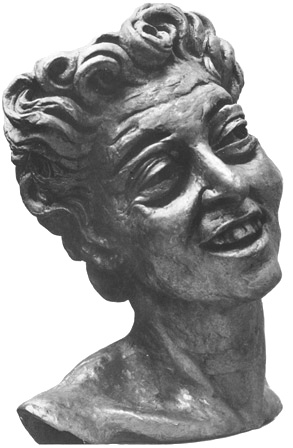
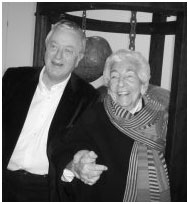

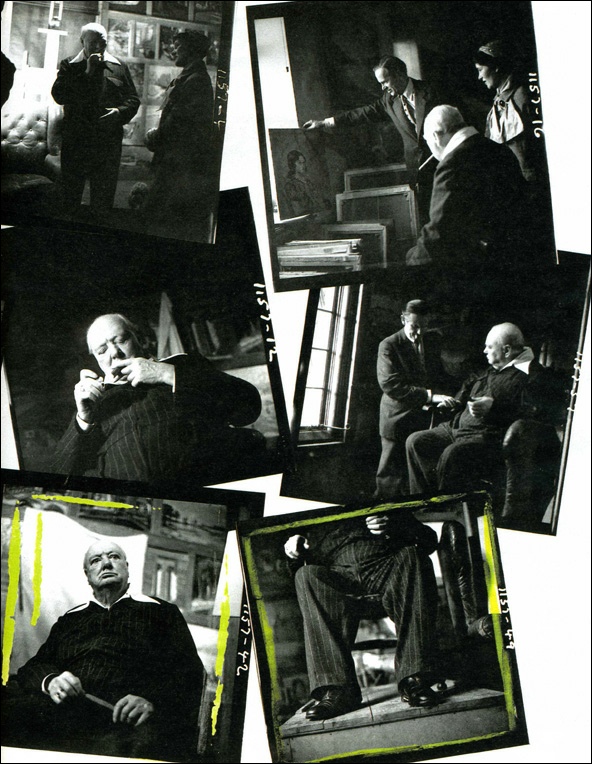
| Animals |
| Busts and Heads |
| Children |
| Churchill studies |
| Lettering |
| Medals coins plates |
| Reliefs |
| Stone carvings |
| Contemporary British Artists |
| On Epstein |
| Picasso |
| The art of portrait sculpture |
| Letters |
| Palliser |
| Son of Man |
| Press |
| Obituaries |
| Memorial address |